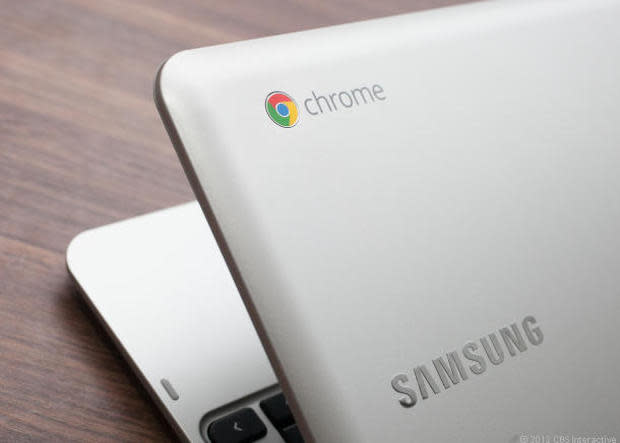Chromebooks leapfrog iPads in US education market for first time, here's why

Image: Sarah Tew/CNET
The momentum continues for Google Chromebooks in education.
Earlier this year, Chromebooks got to 20% marketshare of the education market. After the deployments reached well into the tens of thousands of devices, it was clear that Chromebooks were gaining an even stronger foothold. In October, Google's Sundar Pichai said Chromebooks were nearing 50% share in the US education market.
Now, the latest is that Chromebooks have surpassed Apple iPads in the classroom. According to data from research firm IDC, Google shipped more Chromebooks to education customers in Q3 2014 than Apple did iPads. The official numbers cited by IDC were 715,000 Chromebooks shipped versus 702,000 iPads.
While this doesn't mean that Chromebooks have completely taken over, it does mean that the tides have apparently turned in Google's favor.
Let's take a look at some of reasons for the growth of Chromebooks in education.
The first factor is cost. Initially, the cost of the device comes in much lower for the Chromebook than it does for the iPad, with some Chromebooks hitting right below the $200 price point. According to J.P. Gownder, vice president and principal analyst at Forrester, the cost to manage the device is a consideration as well.
"Chromebooks have a lower hardware price, but also have a lower management costs," Gownder said. "Schools with Windows PCs usually have IT staff imaging laptops and deploying applications all summer long; with Chromebooks, a simple management console suffices, no imaging required."
For younger students, the iPad's tactile technology often wins out over something with an attached keyboard. This makes them attractive to teachers of younger students, but can come up short as the students get older.
"In our student pilots that compared Chromebooks to iPads and several other devices, our students in grades 3-12 overwhelmingly preferred the laptop form factor over tablets. From a technical perspective, iPads required a separate mobile device management (MDM) tool to manage their configurations and safeguards at scale whereas the MDM in Chromebooks was built-in to the Google Admin console," said Adam Seldow, the executive director of technology for Chesterfield County Public Schools in Virginia.
For iPads, there are a plethora of aftermarket keyboards and keyboard cases available, but that adds to the overall cost of each device and becomes a separate accessory that the student has to keep up with.
The majority of major educational software is now available online, which Gownder said is a win for Chromebooks. Another value of Chromebooks is their ability to act as, what Gownder called, zero-state machines. For example, if student X uses a Chromebook for her first period history class, student Y can use that same Chromebook for his second period english class by logging in with his own credentials.
This also makes for much easier device management. According to Seldow, that was one of the reasons his school system deployed Chromebooks.
"At the time of our pilot (January, 2013), the level of MDM integration into the iOS platform was limited in comparison to the Chromebook's built-in MDM," Seldow said. "For example, while we were able to configure a network proxy in iPads, many of the iPad apps were not proxy-aware. This limited the usefulness of many of the apps on our proxied network."
Earlier this year, Google rolled out its Classroom tool, geared toward bettering organization and collaboration between students and teachers. Chromebooks weren't exceptionally difficult to manage before, but Classroom further eases the process by connecting Google Docs, Drive, and Gmail in a unique way.
With Classroom, teachers can create specialized folders, organize assignments, communicate with students, and provide real-time feedback on student performance. Unfortunately, nothing native to the iPad provides the same service.
Another key to the success of Chromebooks in education is Google's approach to security. Apple has succeeded in attaching the idea of security to its brand and image, but Google has taken a few specific steps to address student security.
With Google Apps for Education, the company recently disabled ads and removed the ability to collect and use student data for advertising. Google still isn't the top dog in education, but it is proving its commitment to the market.
"On a cost and simplicity basis, Chromebooks are hard to beat in education," Gownder said.

